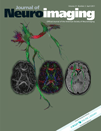Evaluation of the Effects of Thyrotropin Releasing Hormone (TRH) Therapy on Regional Cerebral Blood Flow in the Cerebellar Variant of Multiple System Atrophy Using 3DSRT
J Neuroimaging 2011;21:132-137.
Abstract
ABSTRACT
BACKGROUND
Thyrotropin releasing hormone (TRH) improves cerebellar ataxia and cerebellar perfusion in patients with spinocerebellar degeneration. It is not known whether TRH therapy can improve the cerebellar regional cerebral blood flow (rCBF) or not in patients with cerebellar variant of multiple-system atrophy (MSA-C).
PATIENTS AND METHODS
Seven patients with MSA-C received TRH intravenously (2 mg/day) for 14 days. Clinical efficacy was assessed using the International Cooperative Ataxia Rating Scale (ICARS) and brain perfusion single photon emission-computed tomography was performed before and after therapy. The rCBF in each region of interest (ROI) was calculated using 3DSRT, a fully automated the ROI technique.
RESULTS
The ICARS scores slightly improved in 6 of the 7 patients after TRH therapy, but this was not statistically significant. After TRH therapy, the cerebellar rCBF reduced in the 6 of 7 patients and the mean rCBF in cerebellum also significantly decreased (P= 0.029, paired t-test), whereas the rCBF in the precentral segment tend to increase (P= 0.048, paired t-test).
CONCLUSION
TRH therapy may be less effective on cerebellar ataxia and cerebellar rCBF in MSA-C. The 3DSRT program may be useful for the evaluation of the efficacy of TRH therapy on cerebral blood flow.




